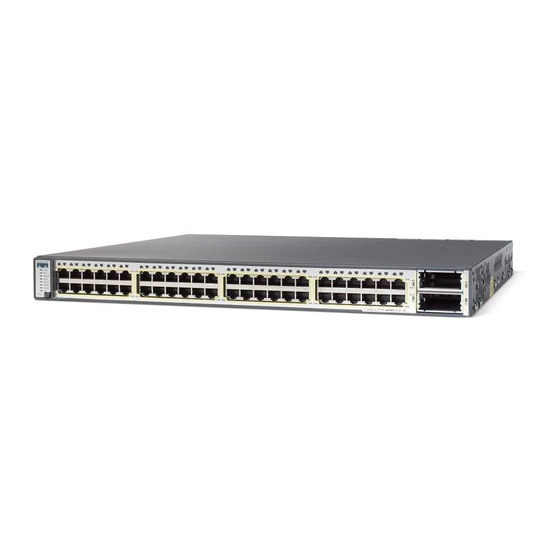
Cisco Catalyst 3750-E Software Configuration Manual
Hide thumbs
Also See for Catalyst 3750-E:
- Hardware installation manual (106 pages) ,
- Getting started manual (27 pages) ,
- Product support bulletin (6 pages)
Table of Contents
Advertisement
Quick Links
Catalyst 3750-E and 3560-E Switch
Software Configuration Guide
Cisco IOS Release 12.2(55)SE
August 2010
Americas Headquarters
Cisco Systems, Inc.
170 West Tasman Drive
San Jose, CA 95134-1706
USA
http://www.cisco.com
Tel: 408 526-4000
800 553-NETS (6387)
Fax: 408 527-0883
Text Part Number: OL-9775-08
Advertisement
Table of Contents
Troubleshooting







Need help?
Do you have a question about the Catalyst 3750-E and is the answer not in the manual?
Questions and answers